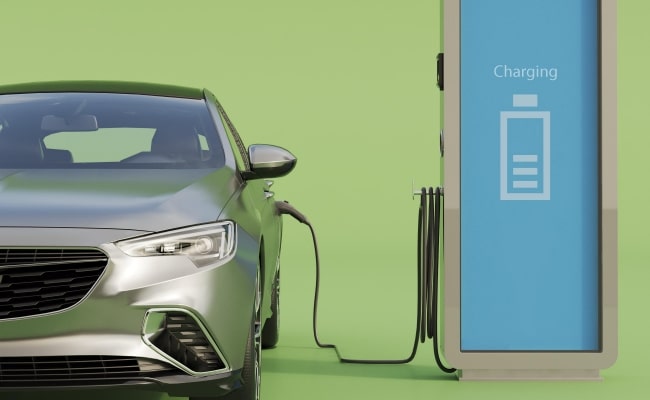How Long Does a Car Battery Last? Key Factors & Tips for Longevity

For any vehicle owner, battery life is one of the most crucial factors to consider today. A non-functional battery will not see a car start or power its electrical components; hence, how long should a car battery last before needing replacement? Well, this answer depends on some key factors affecting battery longevity.
With knowledge about car battery life influences and prudent practices implemented, you can significantly extend your car's battery lifespan. This article gives insight into how car batteries work, what determines their lives, and tips for getting the best performance from your battery.
How Do Batteries Work in an Electric Car?
What propels the vehicle is an electric motor that the rechargeable battery pack of an electric car powers. First, it's worth knowing about these batteries basics.
Multiple small battery cells are interconnected in a large battery pack that forms electric car batteries. The battery capacity, which could be several thousand, and the vehicle's power requirements determine how many cells each cell will have. Anodes, cathodes, electrolytes, and separators are all included in each cell.
How Long Does a Car Battery Last?
How long does a battery last in a car? On average, a car battery lasts 3-5 years before it needs to be replaced. However, some car batteries can take more or less time than that once different factors damage them. Sometimes, when produced incorrectly or exposed to extreme working conditions, these cells may only remain active for less than two years.
Regarding regular maintenance and typical driving patterns, most new batteries will probably last 3 to 5 years. Nevertheless, high-heat areas might wear on them so that in just two to three years, they become incapable of completing their task as usual. If taken care of well, these premium AGM or lithium-ion kinds can surpass the average duration, reaching six to eight years before failure.
How Long Do Car Batteries Last Without Driving?
When a car is not used for weeks or even months, the battery will slowly lose its charge despite no usage whatsoever. The battery naturally loses its charge due to a chemical reaction. Most car batteries self-discharge at about 1-2% per day.
After the first week, remove a fully charged electric car battery and leave it disconnected in your parked vehicle. It will most likely be around 90% charged.
After another week, it may be down to 80%. At a self-discharge rate of 1% per day, it could take more than two months (70-100 days) for a full battery to be completely discharged while idle. In high temperatures, this process happens faster and lasts shorter than when the temperature is low.
Wonder how long will a security camera battery last? Explore Reolink's battery-powered security cameras and find the answer! The NEW Reolink Altas PT Ultra has a 20,000 mAh battery and can last longer time than you can image!
Industry-leading 4K Continuous Recording Battery Camera
4K UHD Continuous Recording; ColorX Night Vision; Pan & Tilt; Automatic Tracking; All Recordings Stored Locally.
Factors Impacting Average Car Battery Life
The duration that a given battery can take depends on various factors that either increase or decrease the battery's life span. Below are some of the major causes, namely:
Driving Frequency
How often a car is driven and how long its average trip takes have a significant impact on its battery life. Short trips and infrequent driving prevent the battery from fully charging; thus, no sulfation occurs on the inside lead plates.
Sulfation occurs when sulfuric acid electrolyte reacts chemically with lead plates, forming hard crystals of lead sulfate that hinder the flow of electricity.
Battery Quality
Generally, batteries made from high-quality materials and subject to strict manufacturing controls last much longer than low-cost ones that are not as strictly inspected.
Premium AGM or lithium batteries consistently outlast standard flooded lead-acid batteries by 1-3 years or more, as their advanced engineering and construction contribute to their increased longevity. However, they have higher initial costs.
Climate
The climate and operating temperature of the battery have a big impact on its lifespan. High temperatures in very hot regions speed up internal chemical reactions within the battery and cause components to degrade faster. While batteries in Alaska might exceed 5 years, batteries in Phoenix may only last 2-3 years.
Maximize life by keeping batteries from external heat sources like direct sunlight or hot engine compartments.
Accessories
The more electrical accessories you power through the battery, the faster it will discharge daily. Large aftermarket audio systems, power-hungry lighting setups, onboard refrigerators, and other gadgets drain the battery significantly over weeks and months.
Lowering electrical load requires choosing lower-draw LED lights instead of halogen bulbs. Do not use accessories unnecessarily—they draw unnecessary current from your supply. This applies to large sizes due to the limited life span of these devices (batteries).
Routine Maintenance
Regular maintenance is essential for maximum battery life. Simple maintenance procedures like cleaning battery posts frequently, checking fluid levels, testing for weak cells, and proper storage/recharging after long-term non-use will optimize battery health and lifespan.
Factors That Shorten Car Battery Lifespan
Certain conditions or driving habits can strain and wear out a car battery at an accelerated pace, significantly reducing its usable service life. Some of the most damaging include:
- Inactivity - Not driving the car regularly enough to fully recharge the battery through the alternator will allow sulfation buildup on the lead plates each time it discharges. Frequent short trips and prolonged sitting strain the battery.
- Overcharging - Trickle chargers and onboard chargers left connected for too long after fully charged will overcharge the battery. This boils off electrolyte fluid and damages the lead plates.
- Extreme Temperature - High heat and sub-freezing cold stress the battery components and accelerate degradation through increased chemical reactions and thickening electrolytes.
- Leaving Lights and Accessories On - Leaving vehicle lights, accessories, or electronics switched on during parking drains the battery over time. The cumulative deep discharge cycles strain the battery. Shutting offloads prevents excessive discharge.
- Faulty Alternator - If the alternator fails to properly recharge the battery during engine operation, the battery discharges more deeply with use and wears out faster.
- Poor Maintenance - Lack of maintenance allows corrosion, loose connections, low electrolyte levels, and other preventable damage that ruins batteries before their expected lifetime.
Signs Your Electric Car Battery Needs Replacement
There are several signs to look for when your battery is nearing the end of its useful lifespan and needs replacement:
Fail to Start Your Car
Difficulty turning the starter motor on or not starting the engine at all could indicate that the battery has become dead and cannot release enough power to engage the starter. Weak batteries have problems starting during cold seasons.
Drop in Driving Distance
Suppose you discover that you are covering fewer distances with a full charge. In that case, you will know that your electric vehicle's battery capacity is waning. This happens because old lithium-ion cells can no longer store as much power, hence necessitating more frequent plugging in.
Dim Interior Lights
A diminished voltage and current flow from an aging battery cell means reduced light output from connected accessories. Clearly faint internal lighting or dashboard warnings of impending battery weakness when operating.
Battery Damage
Extreme damage, such as split or swelling shells, corroded terminals, and acid spillage, indicates irreparable harm that requires instant replacement. Deterioration causes dangerous situations and permanent loss of function.
Frequently Asked Questions
How long does a Tesla car battery last?
Tesla designed these lithium-ion battery packs to last longer than the vehicle. Before they fall below 70% of their capacity, the target range of usable mileage is 300,000 to 500,000 miles. The average life span of Tesla's battery packs is between 8 and 10 years before requiring replacement.
How do I know when my car needs a new battery?
Typical signs of this issue include cranking problems, slow starting, dimming of the lights, a battery that cannot hold a charge for long periods, and being corrosive or damaged. You can perform two tests to determine if your car battery needs to be replaced immediately: the battery voltage test and the load test.
What is the life expectancy of a car battery?
It is the average lifetime of a car battery. Well-maintained premium batteries can last for more than five years. Battery life is curtailed to 2-3 years due to scorching climates, short trips made frequently, continuous loading imposed on accessories, lack of care, and manufacturing defects.
Conclusion
The lifespan of your car battery depends on some factors that are not fixed, such as the type of battery, the temperature under which it is used, driving patterns, accessory usage, and the quality of maintenance.
Most will need replacing between 3 and 5 years, but regular maintenance and good operating conditions can extend longevity. Look for signs of a weak battery and replace it immediately to ensure dependable starting and avoid being stuck with a dead battery. If you find this article useful, share it with your family and friends!
Search
Subscribe for the Latest Updates
Security insights & offers right into your inbox

